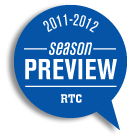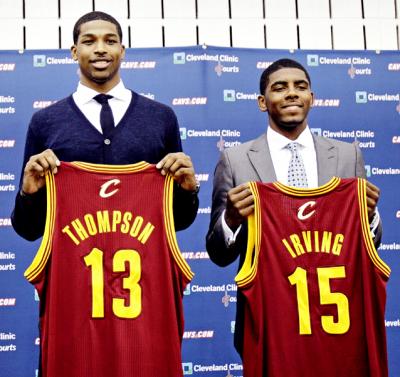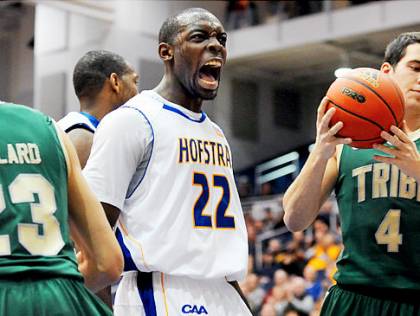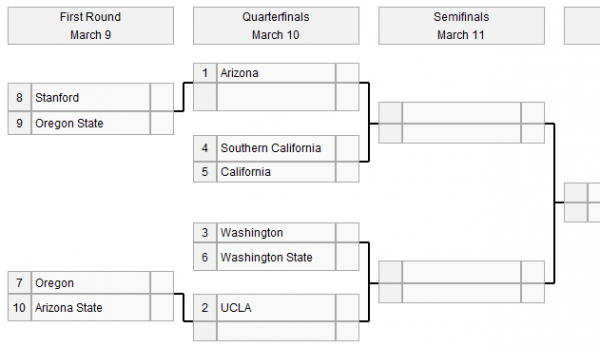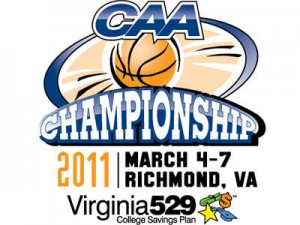Andrew Murawa is an RTC contributor. When he’s not traveling all night to get to Vegas, Los Angeles, Tucson or Anaheim to cover games in the southwestern quadrant of the country, he’s acting as the RTC correspondent for the Mountain West and Pac-10 Conferences and writing about whatever strikes his basketball fancy.
When it comes to wrapping up a college basketball season, I have a hard time doing an All-American team, because, for one, it just seems hard to narrow down four and a half months of basketball to just five names (or even ten or 15 if I add a second or third team – although, I’ll probably do that too). Instead, in the interests of recognizing more of the players that filled up my brain this season, what I’ll do here today is take all 37 possible uniform numbers (only digits zero through five are possible uniform numbers in NCAA basketball, to aid referees in calling fouls and the foulers) and pick one player for each jersey number. Note that I am not always going to pick just the best player here. My own prejudices and likes/dislikes will factor in, plus I want to be able to pick a guy that I will most remember from this season. And, in the case of a tie, a senior will get the nod. So without further ado, here is my list of Players of the Year by uniform number.

A Famous Man Once Said We're All Rooting For Laundry, Ultimately
0 – Jacob Pullen, Sr, Kansas State – As I said before, tie goes to the senior, and in this case, the freshman Jared Sullinger gets beat out by a guy who left his heart on the court in his final game as a Wildcat, scoring 38 amazing points in a loss to Wisconsin in the Third Round of the NCAA Tournament. Pullen goes down in history as the all-time leading scorer in Kansas State history, and his exploits in March will be talked about there for years to come.
00 – Rick Jackson, Sr, Syracuse – As far as the scorekeeper is concerned, there is no difference between 0 and 00, but I see two big zeroes on Jackson’s back, and opponents saw a double-double machine for the majority of the season. He posted 17 double-dips on the season and, despite fading a bit down the stretch, was one of the most improved seniors in the country this year.
1 – Kyrie Irving, Fr, Duke – Irving’s college career is complete as he declared for the NBA Draft on Wednesday. You won’t find his name on any all-timer lists in Durham, as he played just 11 games in his time as a Blue Devil due to a toe injury. When he was on the court, however, he was among the handful of the best players in the nation, with quickness, awareness and maturity rarely seen among freshmen.
2 – Nolan Smith, Sr, Duke – His college career ended with one of the worst games of his career, but for huge swaths of this season, Smith was in the conversation for National Player of the Year. He took over the point guard role when Irving went down with his injury and did a fantastic job of balancing his team’s need for a creator with its need for Smith to score.
3 – Jeremy Lamb, Fr, Connecticut – Jim Calhoun’s precocious freshman earned this honor almost entirely in March. Sure, he had a streak of eight-straight double-digit scoring games in January and early February, but in March, Lamb took his game to a new level and became a consistent second option to Kemba Walker. From the start of the Big East Tournament straight through to the National Championship game, Lamb never failed to score in double figures and averaged 15.3 points per game over that stretch.
4 – Jackson Emery, Sr, BYU – Aaron Craft almost got the nod here, but once again we’ll give the upperclassman the benefit of the doubt. And make no mistake, Emery is very deserving on his own merits, regardless of class, averaging 12.5 points and 2.7 steals per game as Jimmer Fredette’s sidekick in the Cougars’ playmaking backcourt. Emery goes down in history as the career steals leader at BYU.
5 – Kendall Marshall, Fr, North Carolina – I’m not sure Marshall is the best player in the country wearing a single five on his back, but he was likely the most important one – and the biggest story at that. He took over the starting point guard position in Chapel Hill in mid-January and led the Tar Heels to a 17-3 record from there, averaging 7.7 often spectacular assists per game and kick-starting much-heralded freshman wing Harrison Barnes along the way.
Read the rest of this entry »






























